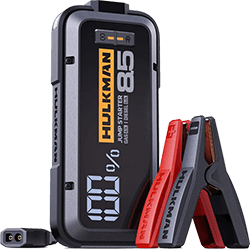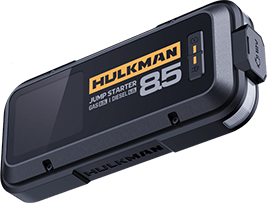Recent Articles
-
Mapping America’s Solar Landscape: Regional and Seasonal Variations November 11, 2025
-
Why Solva Solar Panels Stand Out: From Consumer’s Comment November 06, 2025
-
Unleashing Solar Power: Tips for Using and Maintaining Portable Solar Panels November 03, 2025
Featured Products
note
From Lab to Rooftop: The Evolution of Solar Panel Technology
Solar panels, now a common sight on rooftops and in portable camping setups, are the result of over a century of scientific breakthroughs and engineering ingenuity. What began as a curious lab discovery has transformed into a cornerstone of clean energy, powering homes, satellites, and even portable power station. This blog traces the history of solar panel technology through three key phases—its discovery, its rise to affordability, and its modern efficiency boom—while looking ahead to its future as an everyday energy solution.
In this article, we’ll cover:
- The Dawn of Solar: The Discovery Phase (19th Century–1960s)
- The Rise to Accessibility: The Commercialization Era (1970s–Early 2000s)
- The Golden Age: Efficiency and Versatility (2010s–Present)
- Real-World Applications: Solar in Action
- The Future: Solar as an Invisible Powerhouse
- Conclusion
The Dawn of Solar: The Discovery Phase (19th Century–1960s)
The story starts in 1839 when 19-year-old French physicist Edmond Becquerel stumbled upon the photovoltaic effect. While experimenting with metal electrodes in an electrolyte, he noticed that sunlight triggered a small current—an accidental discovery that laid the foundation for solar energy. However, limited materials kept this “light-to-electricity” trick dormant for nearly a century.
In 1941, Russell Ohl at Bell Labs created the first silicon solar cell, achieving a mere 0.5% efficiency—barely enough to power a light bulb.(MDPI) The real breakthrough came in 1954 when Bell Labs boosted efficiency to 6%, making solar cells practical for the first time. In 1958, the Vanguard 1 satellite used these cells to power its mission, marking solar's debut in space. But with costs exceeding $1,000 per watt, solar panels were a luxury, far from everyday use.
The Rise to Accessibility: The Commercialization Era (1970s–Early 2000s)
The 1970s oil crisis sparked global interest in alternative energy, pulling solar technology from labs to the mainstream. In 1976, the U.S. mastered polycrystalline silicon production, slashing costs to a third of monocrystalline cells while hitting 8% efficiency. This made solar panels viable for terrestrial use, no longer just a space-age gimmick.
Japan and Germany accelerated progress. Sharp in Japan pushed monocrystalline efficiency to 15%, while Germany's subsidies fueled rooftop solar adoption. By the early 2000s, China's manufacturing boom drove costs down to under $4 per watt by 2008—a 99% drop from the 1950s.(Reddit) Solar panels became industrial products, appearing on homes and businesses worldwide, setting the stage for mass adoption.
The Golden Age: Efficiency and Versatility (2010s–Present)
Since the 2010s, solar technology has entered an era of rapid innovation, driven by an “efficiency race”. Monocrystalline cells, enhanced by PERC (Passivated Emitter and Rear Cell) technology, hit 20% efficiency in 2012 and 26% by 2020, led by companies like China's Longi. Polycrystalline cells, using “black silicon” techniques, reached 18-22% efficiency at a cost of just $0.20 per watt, dominating the market.
A standout innovation in this era is Interdigitated Back Contact (IBC) technology, first proposed in the 1970s but commercialized in the 2000s by pioneers like SunPower. IBC solar cells relocate all metal contacts to the rear of the cell, eliminating front-side shading and maximizing light absorption for higher power density. This design decouples optical and electrical optimization, reducing series resistance and surface recombination while enabling efficiencies up to 26.7%—outpacing PERC's 25.4% record. With lower degradation rates (around 0.25% annually) and better temperature coefficients, IBC panels excel in hot climates and high-concentration applications like concentrated photovoltaics (CPV), solar race cars, and even aeroplanes.(sunpower.com) Recent advancements, such as Maxeon's 2024 Maxeon 7 IBC panels, further mitigate hotspot risks through diode functionality and uniform heating, keeping shaded cells up to 67°C cooler than competitors like HJT or TOPCon, enhancing reliability in partial shade.(maxeon.com)
New players like perovskite solar cells emerged as game-changers. From 3.8% efficiency in 2009, tandem perovskite-silicon cells reached 33.9% by 2023, surpassing silicon's theoretical limits.(Nature) Solar panels also diversified: flexible thin-film panels became ideal for camping, while transparent panels doubled as windows. Global solar capacity soared to 1.4TW in 2023, 35 times higher than in 2010. Products like the Hulkman Mega portable power station complement this trend, leveraging 400W solar input and NCM battery cells to deliver reliable power for outdoor adventures, even in -4°F cold or at 13,123ft altitudes.
Real-World Applications: Solar in Action
Solar's evolution has made it versatile across scenarios:
Residential and Commercial: High-efficiency monocrystalline panels with POE encapsulants power homes and businesses, offering 25-30 year lifespans. Their low temperature coefficient (-0.29%/°C) ensures performance in hot climates. IBC technology shines here too, with its pure black aesthetic and 21.8-23.5% efficiency making it a premium choice for rooftop installations that blend seamlessly with modern architecture, promising faster ROI through reduced degradation and higher energy yield.
Off-Grid Adventures: Portable panels, paired with devices like the Hulkman Mega, support camping and RV trips. The Mega's 576Wh capacity, dual-fan cooling, and Wi-Fi/Bluetooth monitoring make it a robust choice for powering devices in harsh conditions, with a magnetic switch for seamless operation.
Precision Electronics: Solar-powered stations like the Hulkman Mega, with ≤15ms UPS switchover and pure sine wave output, safely charge cameras and drones via dual PD 100W/65W ports, ideal for outdoor shoots in cold or high-altitude settings. For advanced setups, IBC's low series resistance supports high-current needs in portable CPV systems.
The Future: Solar as an Invisible Powerhouse
Solar's history revolves around boosting efficiency and cutting costs, and the future promises more. Tandem perovskite-silicon cells aim for 35% efficiency, while automated production and advanced encapsulants will further lower costs. IBC technology, combinable with PERC or HJT for hybrid gains, is poised for broader adoption—potentially capturing 35% market share by 2025 alongside HIT cells—thanks to innovations like tunnel-IBC structures pushing lab efficiencies toward 26%. Solar is becoming integrated into daily life—building materials like solar roof tiles, flexible panels for RVs, and even phone backplates that charge in sunlight. The Hulkman Mega is already a step ahead, with its compact 12.16x7.68x9.61-inch design, 94V0 flame-retardant housing, and full safety certifications (UL2743, FCC), ensuring reliable, portable power for tomorrow's adventures.
Conclusion
From Becquerel's 1839 discovery to today's high-efficiency, versatile panels, solar technology has transformed from a lab curiosity to a global energy leader. With innovations like perovskite cells, IBC's rear-contact revolution, and integrated designs, solar is poised to blend seamlessly into our lives as an “invisible appliance”. Whether powering homes or fueling off-grid trips with solutions like the Hulkman Mega's lightweight 19.13 lbs build and solar-ready ST-25 connector, solar panels are redefining clean energy for a sustainable future.






















